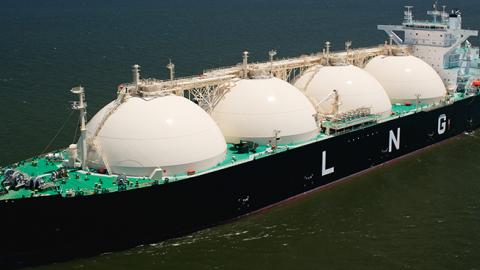Both sides of the longstanding trade dispute between the United States and China suggested recently that sales of U.S. liquefied natural gas (LNG) could be a large part of an eventual resolution. News out of Europe and Japan also features a prominent role for LNG exports to reduce trade deficits with these two allies, and potentially spurring the Trump administration to back down on the steel and aluminum tariffs that have roiled relations. The question left unasked is whether the American LNG industry can shoulder such a heavy burden. A closer look at the trajectory of this sector suggests a mixed answer, at best.
Growth in LNG exports would help the U.S. economy and the environment by reducing greenhouse gases. Germany and, to a lesser extent, Japan, have been importing more U.S. coal as they phase out nuclear generating capacity. China remains the world’s largest user of CO2 rich coal. Substituting natural gas for coal would cut CO2 emissions relative to coal by at least one-half. Producing more natural gas would also be a boon for the U.S. economy, especially its industrial sector. Developing more natural gas fields and building infrastructure to get it to end users would boost not only the energy sector, but also the steel, construction machinery, and other heavy equipment industries.
The problem is that the United States does not presently have sufficient capacity to meet anything near the potential demands from the world’s next three biggest economies. Existing U.S. capacity for exporting LNG is about 3.8 billion cubic feet per day (Bcf/day). Japan alone imports an average of around 12.7 Bcf/day; global imports are around 45 Bcf/day. As Germany, Japan, and perhaps Korea decrease their reliance on nuclear power, and China, India, the United States, and others continue to shift from coal to natural gas, demand is expected to grow steadily. The Energy Information Administration (EIA) expects global LNG demand to triple by 2040.
The U.S. does not have nearly enough liquefaction capacity to make a dent in this growing demand.
The U.S. competes with the Gulf States, Russia, and Australian as an LNG mega-producer. But if China, Japan, and the E.U. are anxious to settle trade disputes by favoring U.S. suppliers, pressure will mount to ramp up U.S. production. The United States is the world’s largest producer of natural gas and has ample reserve capacity. But as of early 2018, American firms have limited LNG facilities. In addition to the existing 3.8 Bcf/day plant capacity, new facilities now under construction would add about 8.1 Bcf/day by the end of 2019, according to the Federal Energy Resource Commission (FERC). Another 6.8 Bcf/day in capacity has gained regulatory approval but construction has not started. Existing plus under-construction capacity is thus around 11.9 Bcf/day, although EIA has a lower projection of 9.6 Bcf/day. LNG capacity in the U.S. was limited until 2015 due to a ban on exports and low prices.
Assuming average existing export prices of $5.62 per million British Thermal Units, exports would be worth about $24.4 billion if the 11.9 Bcf/day capacity is achieved. Current capacity utilization is closer to 80 percent, so the real export figure would be closer to $19.3 billion. The combined trade deficit in goods with China, Japan, and the E.U. was $595 billion in 2017. Based on our calculations, even if all prospective LNG facilities — including some permitted but not yet under construction — were to be completed, the total capacity of around 18.7 Bcf/day would only generate $38.4 billion in exports and reduce the trade deficit in goods up to 6.5 percent. And this is presuming, probably erroneously, that coal exports would not be displaced.
Despite the reality that LNG exports can make only a relatively small dent in the cumulative trade deficit, the effort to increase production is well worth the price. It would require a determined and sustained initiative by the Trump administration to overcome traditional obstacles, including regulatory delays and resistance to new production and pipelines. To take but one example, the North Slope of Alaska has enormous reserves of natural gas, but development has been stymied by decades of opposition. A small LNG facility in Southern Alaska was mothballed in 2015. In recent years, the Alaskan state government has cobbled together an ambitious gas extraction, pipeline, and LNG project, with a projected cost of $40–45 billion, to bring North Slope gas largely to the Asian market. A 2.6 Bcf/day liquefaction and export facility is the final stage of the project. Chinese money and construction resources may be part of the project and a possible deliverable of ongoing U.S.-China trade negotiations. Japanese expertise and financing could also be a potential part of a project of this scope. The initial application for the project submitted to the Federal government was 55,000 pages in length, leaving plenty of room for assistance.
But a new and more flexible approach to regulation and resource development would be required if this project and others like it are to have any chance of success. Some elements of a shift would include streamlining the permitting process for LNG facilities; eliminating the federal permit requirement to export natural gas; placing time limits on federal authorities to review applications for energy infrastructure projects; and expanded permitting for exploration and development of resources on Alaska’s North Slope. A new direction in development policy would support the U.S. economy, help lower the trade deficit, and contribute to lowering CO2 emissions.















